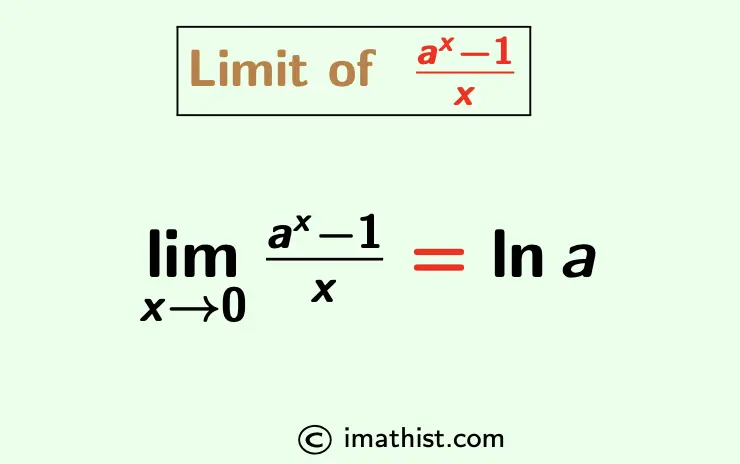The limit of (a^x-1)/x as x approaches 0 is equal to 1. The limx -> 0 (ax-1)/x formula is given by
$\lim\limits_{x \to 0} \dfrac{a^x-1}{x}=\ln a$
where ln a = logea. In this post, we will learn to prove the limit of (ax-1)/x when x tends to zero.

Limx → 0 (ax -1)/x
| Prove that limx → 0 (ax -1)/x = ln a. |
Answer:
As ax = ex lna, the given limit limx → 0 (ax -1)/x can be written as follows.
$\lim\limits_{x \to 0} \dfrac{e^{x \ln a}-1}{x}$
= $\ln a \lim\limits_{x \to 0} \dfrac{e^{x \ln a}-1}{x\ln a}$
[ Let xlna =t. Then t→0 when x→0 ]
= $\ln a \lim\limits_{t \to 0} \dfrac{e^{t}-1}{t}$
= $\ln a \times 1$ by the limit formula limx→0 (ex-1)/x = 1.
= ln a
So the limit of (ax -1)/x is equal to lna when x→0.
More Limits:
FAQs
Q1: What is the limit of (ax-1)/x when x tends to 0?
Answer: The limit of (ax -1)/x when x tends to 0 is equal to lna, that is, limx→0 (ax -1)/x =lna.